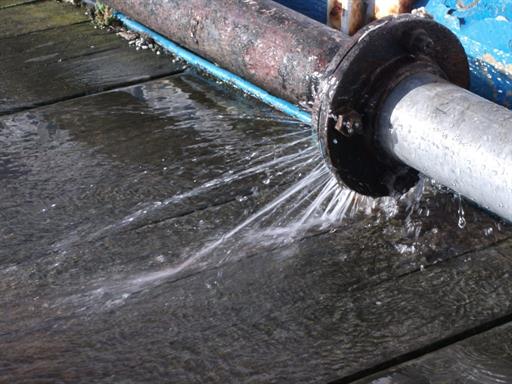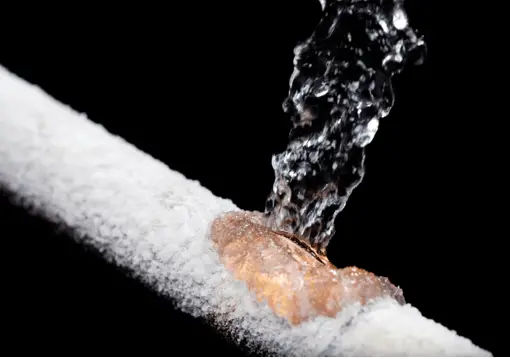Here in the next paragraph you will discover a lot of really good information all about How to Install and Connect a New Dishwasher.

A ruptured pipeline is a major emergency; you can only stand as you enjoy water you pay dearly to rejoin with the planet. In worse situations, you observe a swimming pool on your kitchen area flooring, which is a fantastic trip danger, particularly if you have kids around. If the pipe that ruptured remained in your wall surfaces, bad news: you might need to repaint that entire area.
How can a catastrophe like a burst pipe be protected against and managed? Well, by listening to your professional emergency plumbers and also adhering to these guidelines.
Exactly how do I recognize when my pipes have burst?
Varying water pressures
Pipelines do not simply burst in a day. You may have noticed that your kitchen area faucet or shower doesn't run immediately when you transform the tap. It may stop briefly for a few seconds and after that blast you with more pressure than common.
In other circumstances, the water might appear normal initially, after that drop in stress after a couple of seconds.
Polluted water
Many individuals assume a burst pipeline is a one-way electrical outlet. Fairly the contrary. As water flows out of the hole or laceration in your plumbing system, pollutants discover their way in.
Your water may be polluted from the resource, so if you can, examine if your water container has any problems. However, if your drinking water is supplied as well as cleansed by the local government, you need to call your plumber immediately if you see or smell anything amusing in your water.
Puddles under pipelines and also sinks
When a pipeline ruptureds, the discharge forms a puddle. It might appear that the puddle is growing in size, and despite how many times you mop the puddle, in a few minutes, there's another one waiting to be cleaned up. Usually, you might not have the ability to trace the pool to any kind of noticeable pipes. This is a sign to call a professional plumber.
Wet wall surfaces and also water spots
Before a pipe bursts, it will certainly leakage, a lot of times. If this consistent dripping goes undetected, the leak may finish right into a vast tear in your pipe. One simple way to prevent this emergency is to keep an eye out for wet wall surfaces ad water discolorations. These water stains will lead you right to the leak.
Untraceable leaking sounds
Pipe bursts can happen in the most undesirable locations, like within concrete, inside wall surfaces, or under sinks. When your house goes silent, you may have the ability to hear an irritatingly relentless leaking sound. Also after you've inspected your shower head as well as kitchen area tap, the dripping may continue.
Precious viewers, the trickling might be originating from a pipe inside your walls. There isn't much you can do concerning that, except tell a professional plumber.
Turn up the Heat
Establish followers to blow heat into cool spaces. Keep the garage door shut. If you have decreased water flow, warmth one of the most susceptible pipelines (normally in basements and crawl spaces or near outside walls) with a hair clothes dryer. Leave the faucet on while you use warm. As you melt ice, the circulation will increase. To avoid pipes from cold, protect your walls.
Beginning Doing Away With the Water
Grab the wipe, containers as well as a shop vacuum cleaner to start to remove the water since you certainly do not want it saturating into every little thing else in your home. And also, a quick tidy up will lower the possibilities of something obtaining moldy.
What do I do when I identify a burst pipeline?
Your water meter will remain to run even while your water wastes. To lessen your losses, find the primary controls and turn the supply off. The water pipe are an above-ground framework at the edge of your home.
How to Fix & Detect a Leaking Pipe
How Do I Know if a Pipe is Leaking?
Leak detection tests can help you determine if your pipe has a leak. Even if you don’t see an apparent leak, you should still conduct leak detection tests regularly to save water and money—and prevent major damage to your home.
Water meter. It can be helpful to figure out what your usual water meter usage numbers are and then monitor them regularly. To monitor your meter, first, turn off all water faucets in your home. Check the meter and write down the numbers. In a few hours, check the meter again. If the numbers have changed, you have a leak. Water gauge. Use a water gauge to test your water pressure. Your showerhead should produce a certain amount of water pressure based on its model and design. If the pressure is lower than it is supposed to be for that specific showerhead, your home likely has a leak. Puddles. Look inside your bathroom, laundry, and kitchen sink cabinets. Puddles around the cabinets or around toilets, tubs, showers, and washing machines indicate the presence of a leaking pipe. You may also notice loose tiles, peeling or flaking paint, or mold caused by water accumulation. Napkin test. Even if you don’t see any puddles, you may still have a leak. You can test for water leaks in the bathroom, laundry, and kitchen by wiping below-sink connections with a napkin, paper towel, or piece of toilet paper. If it becomes damp, you probably have a leaking pipe under the sink. Discolored walls. Walls that are discolored—usually with brown or yellow stains—or bulging might mean that they have been impacted by water damage caused by a leaking pipe. Smell. A leaky pipe will create sitting water, and over time, that water may develop a musty smell. If your home smells musty, but you can’t locate the source, it may be due to a leak. Steps for Fixing a Leaking Pipe
A leaky drain can be remedied by tightening the pipe base, replacing the drain seal, caulking the rim, and tightening the pipe nut. Similarly, a leaking toilet pipe can be treated by tightening the packing nut. You may also need to replace the valve. A leaky faucet may just need tightening or replacement of the washers. If that doesn’t work, consider replacing your faucet. If your pipe has a hole in it, you may want to use a pipe leak sealer or pipe leak tape. This quick fix for water pipe leaks can also temporarily fix a copper pipe leak. https://www.ahs.com/home-matters/quick-tips/how-to-tell-if-pipes-are-leaking/

I ran across that review on What to Know Before Installing a Dishwasher when perusing the search engines. Sharing is good. Helping people is fun. We treasure reading our article about How to install a dishwasher safely.
Go Company
 Haley Joel Osment Then & Now!
Haley Joel Osment Then & Now! Robert Downey Jr. Then & Now!
Robert Downey Jr. Then & Now! Erik von Detten Then & Now!
Erik von Detten Then & Now! Pauley Perrette Then & Now!
Pauley Perrette Then & Now! Ryan Phillippe Then & Now!
Ryan Phillippe Then & Now!